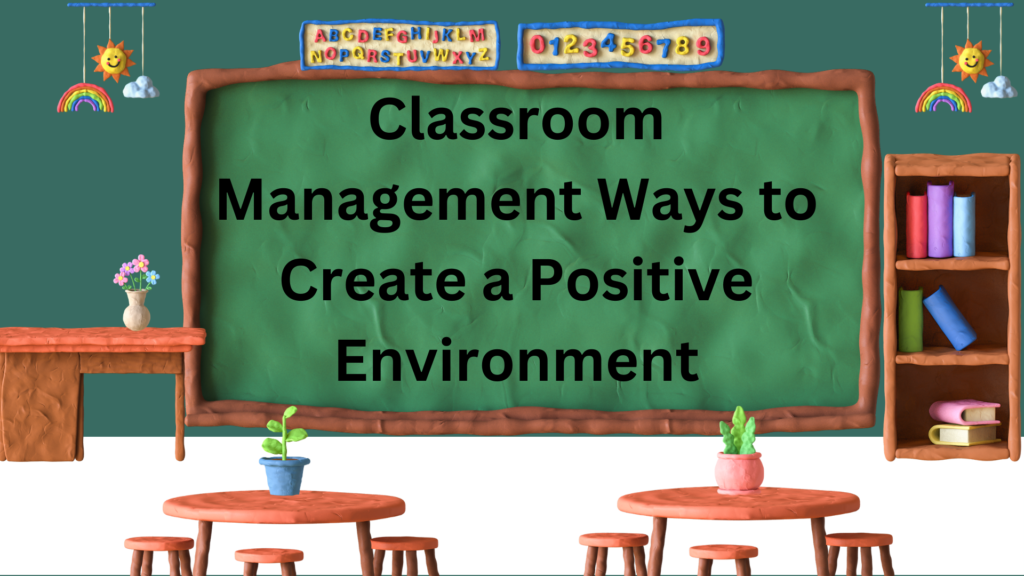Creating a positive learning environment is very important for student success. In fact, effective classroom management techniques can really improve this environment. In this blog, we will look at different strategies that teachers can use to create a supportive and engaging classroom atmosphere. By using these techniques, educators can help students feel more comfortable and motivated to learn.
Understanding the Importance of a Positive Learning Environment
A positive learning environment is very important for both academic and social development. Research shows that students do better in classrooms where they feel safe, respected, and engaged. When teachers create a supportive atmosphere, students are more likely to participate actively and achieve their academic goals. Therefore, the key to effective teaching is to build an environment that encourages learning.
Designing the Physical Space
The physical layout of a classroom plays a key role in shaping the learning experience. Factors like seating arrangements, lighting, and decor affect how students behave and engage. For example, flexible seating options encourage collaboration and movement, while organized spaces reduce distractions. Teachers should regularly check their classroom setup to ensure it meets the needs of all students. A well-designed classroom creates a welcoming atmosphere that promotes focus and creativity.

Building Strong Relationships
Building positive relationships between teachers and students is very important. When students feel connected to their teacher, they are more likely to get involved in learning. Simple actions, like greeting students at the door or using their names, can help create a sense of belonging. Also, encouraging friendships through group work can improve social skills and build a supportive community. Overall, making these connections is essential for a positive classroom environment.
Want to learn about the classroom discipline? Click here to read the recently uploaded blog on our website.
Setting Clear Expectations and Routines
Clear expectations are very important for keeping order and encouraging positive behavior. At the start of the school year, teachers should work together with their students to set classroom rules. This process helps students know what is expected of them and lets them take responsibility for their actions. In addition, having consistent routines can provide structure and make things more predictable. Regularly going over these expectations reinforces their importance and helps students stay focused.
Engaging Students Actively
Active engagement is a key part of effective classroom management. Lessons should be interactive and connected to students’ lives. Using different teaching methods, like group discussions, hands-on activities, and technology, can meet various learning styles. Also, giving students choices in their learning can boost their motivation. When students are actively involved, they are more likely to participate and remember what they learn.
Utilizing Proactive Strategies
Proactive strategies are very important for reducing disruptions. Establishing routines helps students transition smoothly between activities and prevents behavior problems. For example, starting each class with a quick review of what students learned before activates their prior knowledge and prepares them for new content. Additionally, using non-verbal cues, like hand signals or eye contact, helps keep students’ attention without interrupting the lesson flow.
Encouraging Student Voice and Feedback
Involving students in decision-making can create a more positive atmosphere. Teachers should regularly ask for feedback from students about what makes a positive classroom. This can be done through surveys, discussions, or suggestion boxes. When students see their opinions matter, they are more likely to engage positively. Encouraging student voice helps them feel ownership and responsibility for their learning environment.
Providing Support and Resources
Teachers should not be afraid to ask for support when facing classroom management challenges. Professional development opportunities give educators new strategies and insights. Collaborating with colleagues provides fresh perspectives and solutions to common problems. Schools should create an environment where teachers feel comfortable sharing experiences and asking for help. This support network can improve overall classroom management.
In addition, need to know about the strategies of of managing the classroom? Click here to read.
Conclusion
Creating a positive learning environment is an ongoing journey that takes dedication and reflection. By using effective classroom management techniques, teachers can create a space where students feel safe, respected, and motivated to learn. Remember, the goal is not just to manage behavior but to build a community of learners who support each other.
As you think about your practices, consider how you can improve your classroom environment. What strategies will you try? If you found these ideas helpful, think about joining our Business Cluster for more resources and support in creating effective learning environments. Together, we can make a difference in our classrooms!